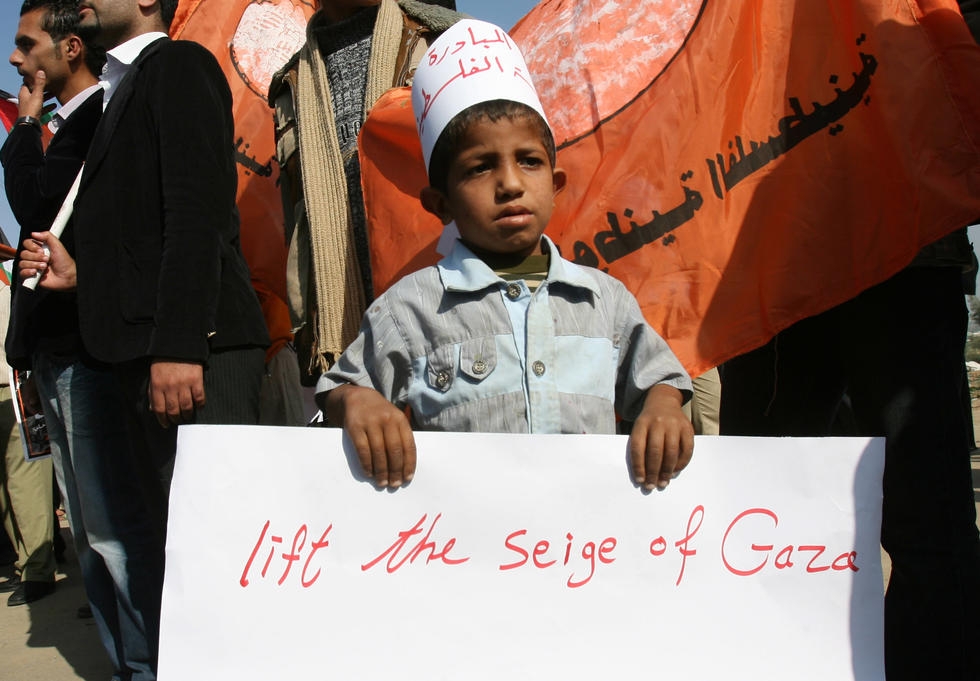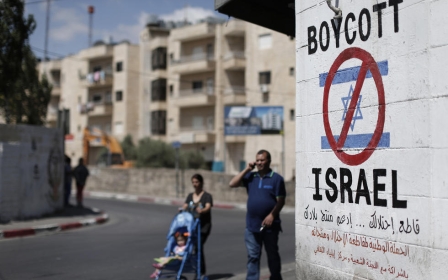Gaza’s recurring Stone Age

The eighth of July marks the one-year anniversary of the start of Operation Protective Edge, the Israeli military’s conversion into rubble of numerous sections of the Gaza Strip.
According to the United Nations, 2,251 Palestinians were killed during the assault; most were civilians, and 551 were children. In Israel, six civilians perished.
One of the most densely populated areas in the world, Gaza also appears to have a disproportionately high incidence of tragedy per square kilometre. Indeed, in contemplating Gaza’s timeline, one is hard-pressed to spot any anniversary that commemorates something pleasant rather than disastrous.
A week and a half ago, for example, was the ninth anniversary of the commencement of Israel’s Operation Summer Rains on 28 June 2006, which was followed by Operation Autumn Clouds. The meteorological convergence produced more than 400 dead Palestinians.
On the forecast for later this year are the anniversaries of Operation Pillar of Defence - which began on 14 November 2012 and left nearly 200 Palestinian corpses in its wake - and Operation Cast Lead, launched on 28 December 2008. The latter project reduced the population of the Gaza Strip by about 1,400, primarily civilians.
The 15th of May is, of course, another big day, being the anniversary of the original catastrophe that set the ball rolling towards many more: the forcible establishment in 1948 of the state of Israel, on Palestinian land. Right off the bat, approximately 10,000 Palestinians were killed and three-quarters of a million were rendered refugees, thanks to the policy of ethnic cleansing upon which the state was founded.
Meanwhile, Israel’s adeptness at manipulating timelines has helped to ensure that Gaza’s contemporary history remains chock full of atrocities.
Take the case of Cast Lead, when the world was led to believe that the mass bloodshed in the Palestinian coastal enclave was unquestionably the fault of Hamas, for allegedly breaking the ceasefire that was then in place.
Hamas’s determination to terrorise Israeli civilians with - largely ineffective - rockets, it seemed, had led the organisation to brazenly endanger the lives of its own people, who became acceptable collateral damage in what was supposedly a legitimate Israeli retaliation.
But what this truncated version of events handily concealed was that, the month prior to Cast Lead, Israel had broken the ceasefire with Hamas, prompting a rocket-based retaliation from Hamas that Israel then assigned to the position of Event #1 in the Cast Lead timeline.
Last year, too, Protective Edge was advertised as retaliation against rocket fire from Gaza. Missing from the Israeli story, however, was that said aggression was itself in response to Israel’s actions in the West Bank, where the disappearance and killing of three Israeli teenagers was exploited for politico-homicidal purposes.
As the Mondoweiss website described it, the Israeli military “rampaged through hundreds of homes and even universities, killing a half dozen civilians and arresting well over 500 people who had nothing to do with the Israeli teens’ disappearance and murder”.
The day after the launch of Protective Edge, one Amos Regev published a piece in the Israel Hayom newspaper, endearingly titled “Return Gaza to the Stone Age.” At first glance, this seemed to be in keeping with traditional Israeli military rhetoric, which has included threats to “turn back the clock in Lebanon by 20 years” and other forms of chronological harassment.
As it turned out, Regev intended his title “not in the sense of destroying every home and all the infrastructure” but rather the elimination of “every rocket, bomb and gun” in Gaza via a “massive concentration of force” that involved “no pinpricks or surgical strikes”. This, Regev surmised, would relegate Hamas to “a situation in which the most it can do is throw stones”.
Anyone who pays a remote amount of attention to reality will of course be aware that a stone-based arsenal wouldn’t make existence any less harrowing for Palestinians. Let’s not forget Yitzhak Rabin’s famous orders to Israeli soldiers to break the bones of participants in the first Intifada - people equipped with rocks, not rockets.
In a Haaretz article just this past weekend titled “Death penalty for stone throwing,” Israeli journalist Gideon Levy decries the recent shooting death of Palestinian teenager Mohammad Kosba by an Israeli colonel. Levy notes that Kosba is the third of his brothers to be fatally shot by Israeli soldiers for stone-throwing offences. The first brother to die was 10 years old; there is one brother left.
Meanwhile, 20 or so days after Regev’s performance in Israel Hayom, the Daily Beast deployed an alternate adaptation of his metaphor in the form of this headline: “Israel’s Campaign to Send Gaza Back to the Stone Age.”
Datelined Gaza City, the article’s author notes that, “[a]lthough the stated aim of Israel’s offensive is to end the threat of rockets and missiles launched from Gaza, and to destroy the system of underground tunnels Hamas has built as part of a guerrilla campaign, it is civilians that have mostly been killed or had their homes, businesses, and communities obliterated”.
And the Stone Age, it seems, is set to last for a while. As part of Haaretz’s Protective Edge anniversary series, Khaled Diab writes about a Gaza still in ruins, where “rubble is one of the few growth areas in the besieged and battered economy”. For five or six dollars per backbreaking 11-hour day, desperate folks have been carting rubble to an industrial crusher that recycles the material into gravel for reconstruction purposes.
But in the event Gaza is ever reconstructed, Israel’s got its own set of recycling skills.
- Belen Fernandez is the author of The Imperial Messenger: Thomas Friedman at Work, published by Verso. She is a contributing editor at Jacobin magazine.
The views expressed in this article belong to the author and do not necessarily reflect the editorial policy of Middle East Eye.
Photo: A Palestinian boy holds a sign that reads "Lift the siege of Gaza" at a demonstration at the Gaza side of the Erez crossing between Israel and the Gaza Strip (AFP)
Middle East Eye propose une couverture et une analyse indépendantes et incomparables du Moyen-Orient, de l’Afrique du Nord et d’autres régions du monde. Pour en savoir plus sur la reprise de ce contenu et les frais qui s’appliquent, veuillez remplir ce formulaire [en anglais]. Pour en savoir plus sur MEE, cliquez ici [en anglais].





